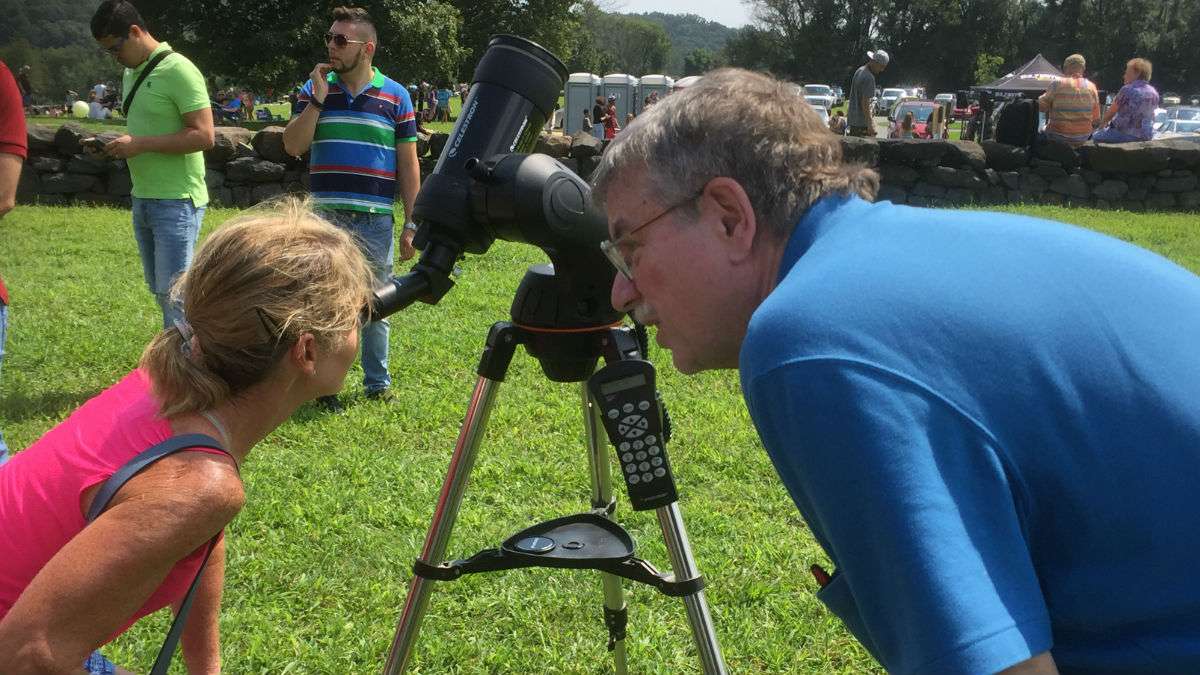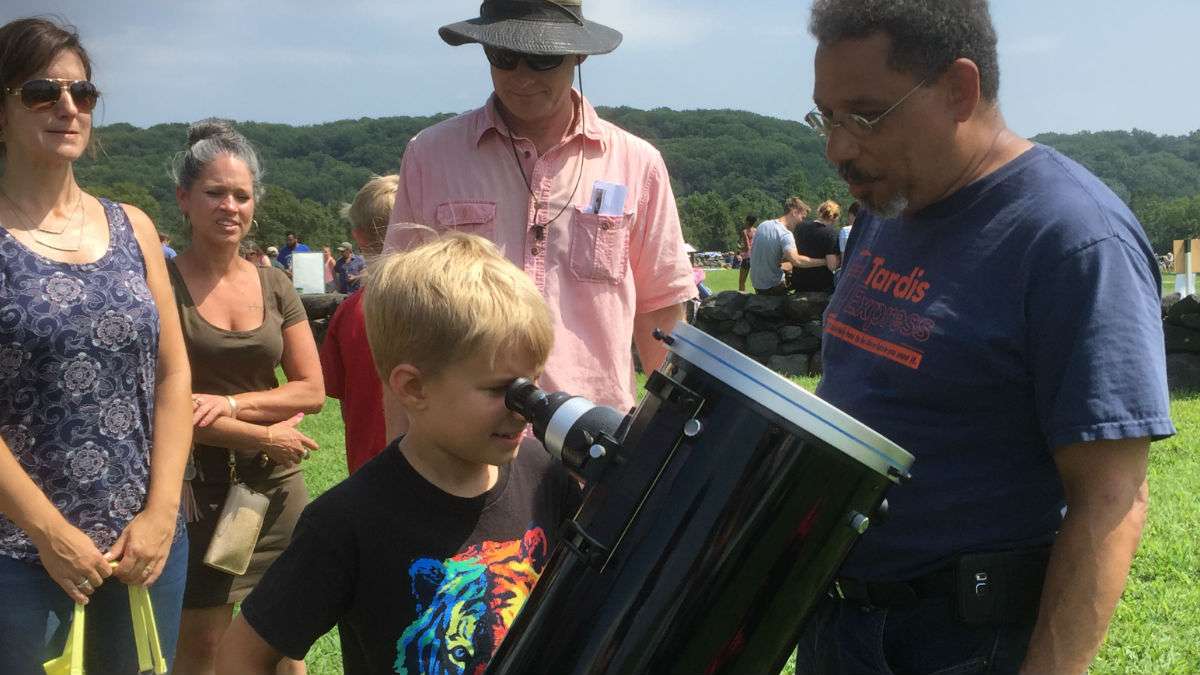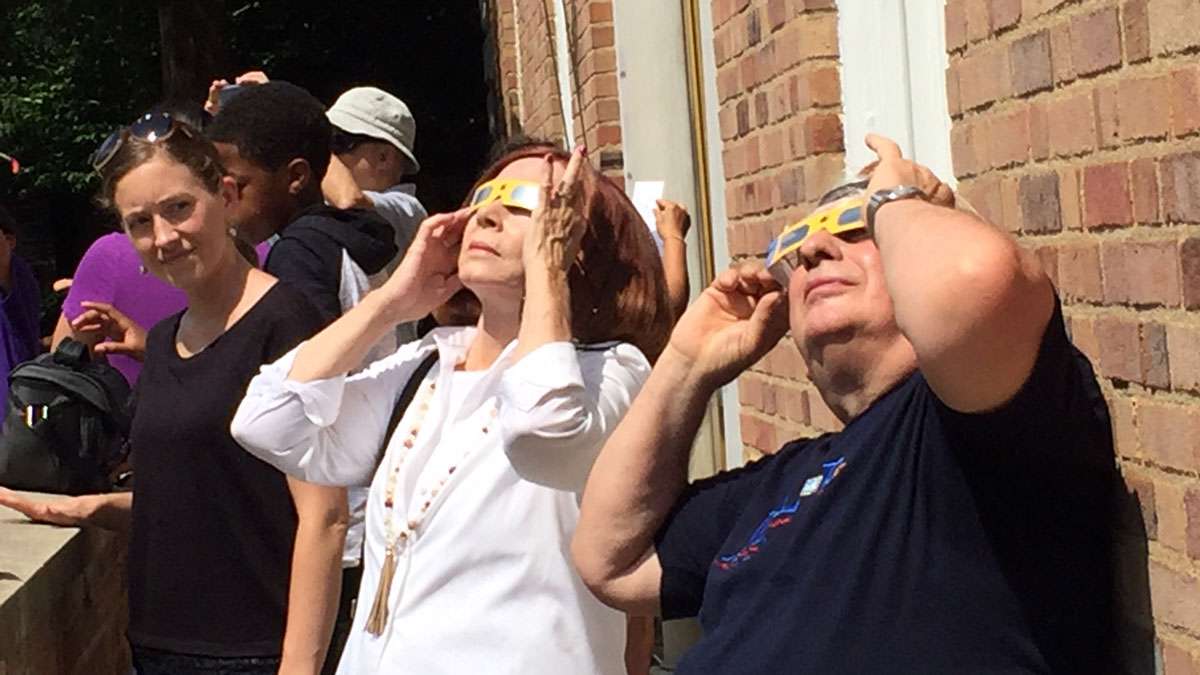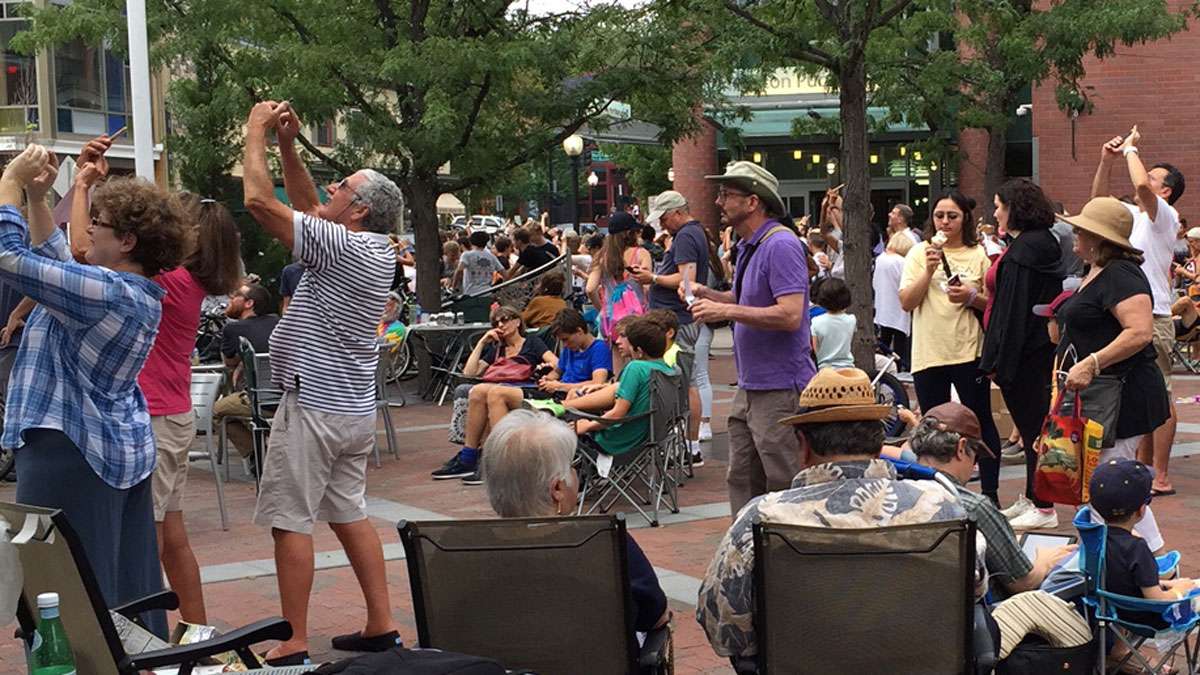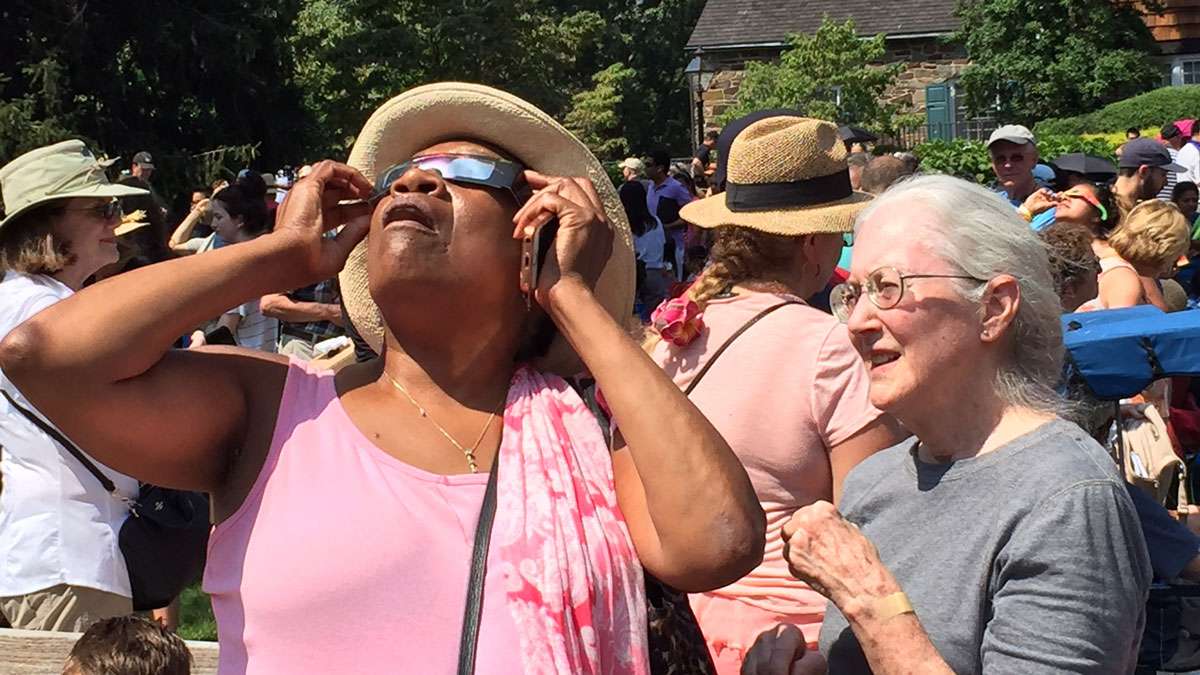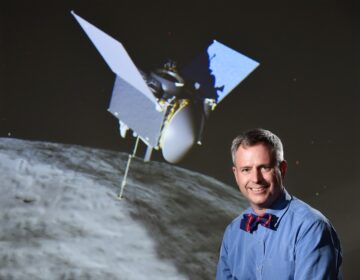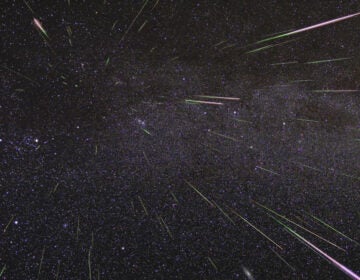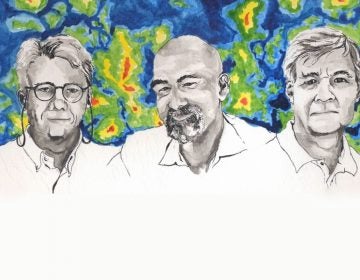Clouds create a spectacular solar eclipse view in Princeton
You would think clouds moving in would be the worst thing that could happen during a solar eclipse. But in Princeton, New Jersey, it created a dramatic moment for eclipse watchers.
On Monday around 2:30 p.m. it was still sunny and for the past hour people looking through their protective glasses could see the moon slowly cross into the path of the sun.
At 2:35 p.m. a large cloud began to block the sun entirely. In the plaza in front of the Princeton Public Library there was a collective sigh of disappointment.
But after about ten seconds a crescent shaped sun appears through the clouds for everyone to see. “There it is,” shouted a man in the crowd pointing into the sky. A woman exclaimed “God really knows how to provide.”
It was the clouds that gave everyone, with and without special glasses, a chance to see the eclipse together.
The eclipse maxed out at 2:44 p.m., over Princeton with a dramatic partial eclipse (73%). As the cloud thickness changed the crowd got to see variations of the eclipsed sun, sometimes with dark gray revealing a barely visible sun then getting brighter and brighter until it was to bright to look at without protective glasses.
The main gathering in Princeton was about a block away at the town’s center, Palmer Square. It’s a small grass covered park that is surrounded by boutique shops, the Nassau Inn and the old post office. There hundreds of people were packed in tightly to see the solar eclipse. When the solar eclipse began you couldn’t tell unless you were using the protective glasses or looking through one of the many make-shift pin-hole camera viewers. So, when people first put on the protective glasses there reactions were the same, “Oh my God, it’s already happening, I can see it.”
The Earth, moon and sun line up perfectly every one to three years, briefly turning day into night for a sliver of the planet. But these sights normally are in no man’s land, like the vast Pacific or Earth’s poles. This is the first eclipse of the social media era to pass through such a heavily populated area.
The moon hasn’t thrown this much shade at the U.S. since 1918, during the nation’s last coast-to-coast total eclipse. The last total solar eclipse on the U.S. was in 1979, but only five states in the Northwest experienced total darkness.
The next total solar eclipse in the U.S. will be in 2024. The next coast-to-coast one will not be until 2045.
The Associated Press contributed to this report.
WHYY is your source for fact-based, in-depth journalism and information. As a nonprofit organization, we rely on financial support from readers like you. Please give today.





